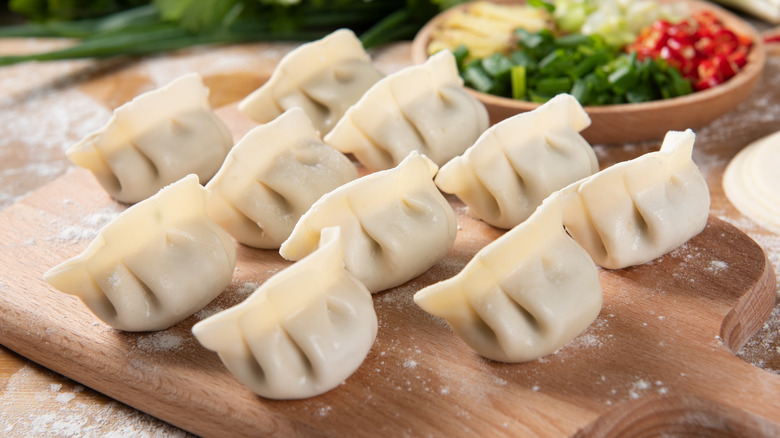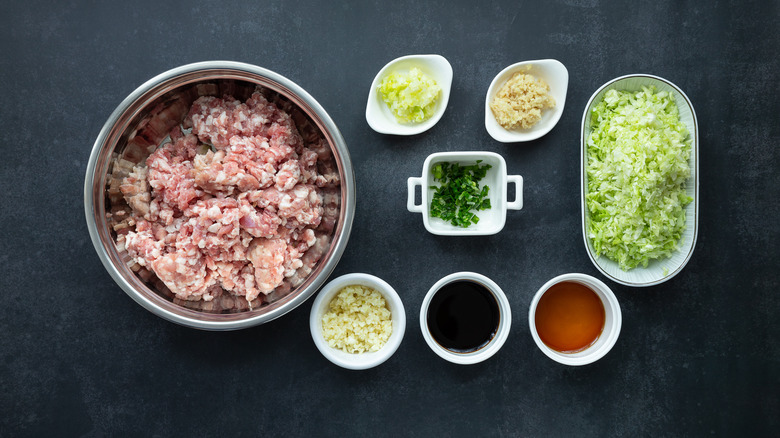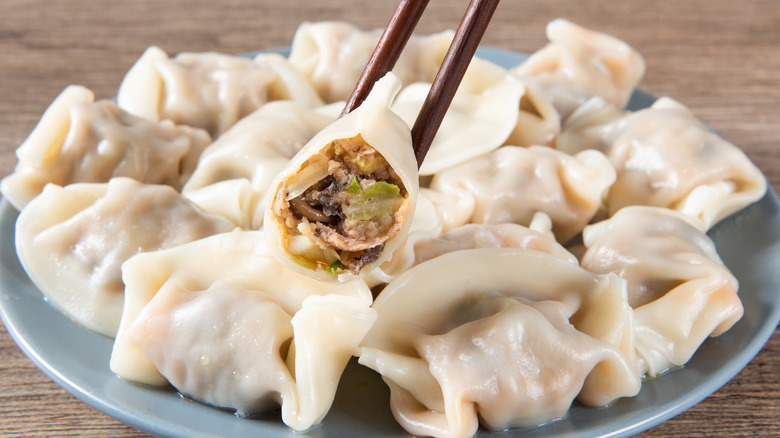Fly By Jing Founder And CEO Shares Her Go-To Ingredients For Perfect Jiaozi
The lunar new year is a special time that's all about bringing together the family, celebrating the beginning of a new year on the lunisolar calendar, and, of course, eating good food. One food that's particularly popular at this time of year is jiaozi, or Chinese dumplings. This dish is highly involved, requiring multiple steps to put the dumplings together. That means not just eating it, but also making it with a group of family or friends can be a great way to spend time celebrating the new year.
Now, half the fun of jiaozi is that they're highly versatile. Fly By Jing founder and CEO Jing Gao says, "The best meat filling for homemade jiaozi traditionally involves ground pork. Ground pork has a fat content, which ensures the filling remains juicy and flavorful upon cooking." However, this is just one filling of many. There are plenty of other proteins and veggies that you can stir into your stuffing, and according to Jing, "The key is to balance the fat and lean meat for moisture and flavor." That way, you can create a meal the family won't want to stop eating.
Choosing the right veggies and proteins for your jiaozi
When making flavorful jiaozi dumplings, it's not just about what ingredients you choose: Quality also matters. Jing Gao says, "The quest for the perfect jiaozi begins with sourcing the right ingredients. While it's true that all grocery stores offer ingredients for jiaozi, the quality can vary greatly. For the freshest and most authentic flavors, local Asian markets are irreplaceable." If you don't have an Asian supermarket near you, don't despair — you may find authentic ingredients in the international section of the grocery store. And if you can't, make sure that, wherever you source them from, they're fresh and high quality.
You may be wondering what exactly to include. With jiaozi, there are tons of options, and depending on what region or family the dumplings come from, they may look a little different. If you need a few suggestions, Jing suggests, "Essential ingredients include high-quality ground pork or a mixture of pork and shrimp for meat fillings; and for vegetarians, shiitake mushrooms, cabbage, and chives." You could also play around with water chestnuts for some crunch or herbs such as coriander and dill to enhance the flavors of your protein and veggies.
You'll also need oil. Jing explains, "A specific oil isn't mandatory, but sesame oil adds a distinct, nutty flavor that enhances the filling." Keep this in mind as you choose which to add, whether you go with her suggested sesame oil or something different like truffle or peanut oil.
It's not just the ingredients that matter
While what goes into your jiaozi filling may be a big part of creating the perfect dumplings, that's not the only thing that matters. There are a few other tips and tricks for cooking jiaozi to ensure you get a tasty meal. For one thing, you'll want to make sure your filling isn't too watery. You can draw out the liquid in veggies with a high water content, such as by salt marinating or squeezing them out. Or, you can add ingredients to your filling, like scrambled eggs, to help absorb some of the excess moisture. Otherwise, you could wind up with soggy or broken jiaozi with an unpleasant texture.
It's not just the filling that matters, either. You also need to pay attention to the wrappers, especially if you're making them from scratch. For homemade jiaozi wrappers, you'll want to make sure you let the dough sit. This allows the gluten to relax and makes them easier to work with. Alternatively, you can go with store-bought wrappers to save time. Whichever you use as you work, place them under a damp towel so they don't dry out and prevent you from closing them up properly.
At the end of the day, making jiaozi is a labor of love. But, with these tips and tricks, you can make sure all that hard work pays off to create a delicious dish.


